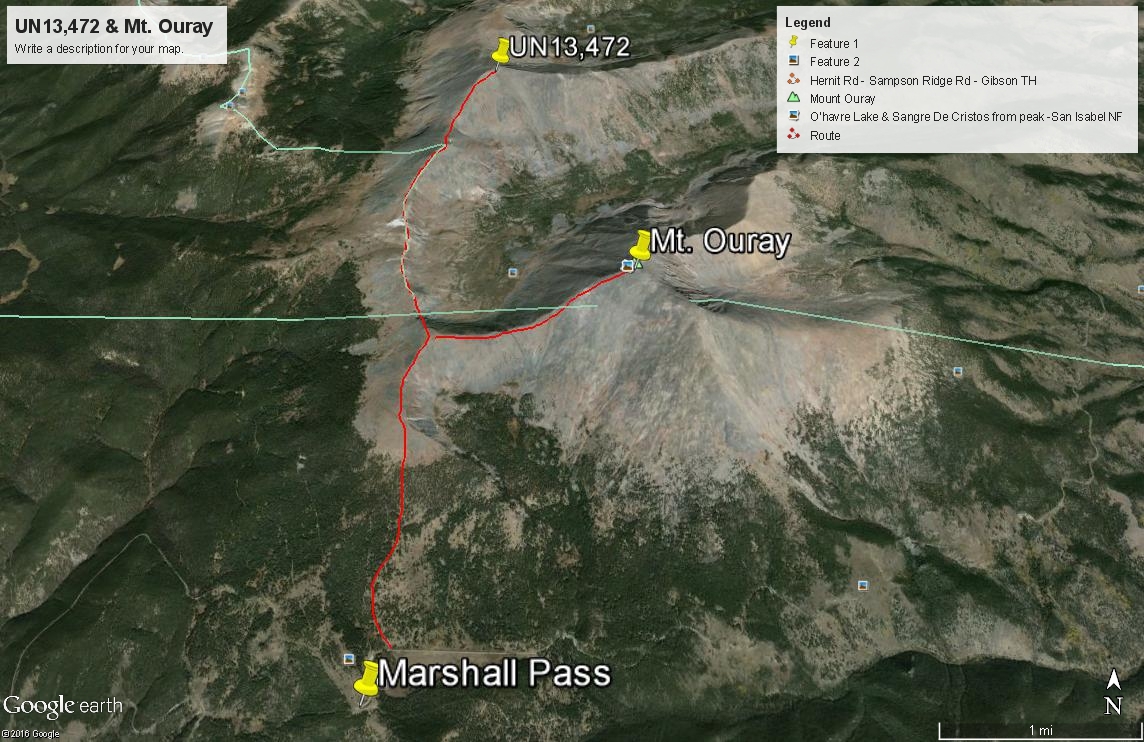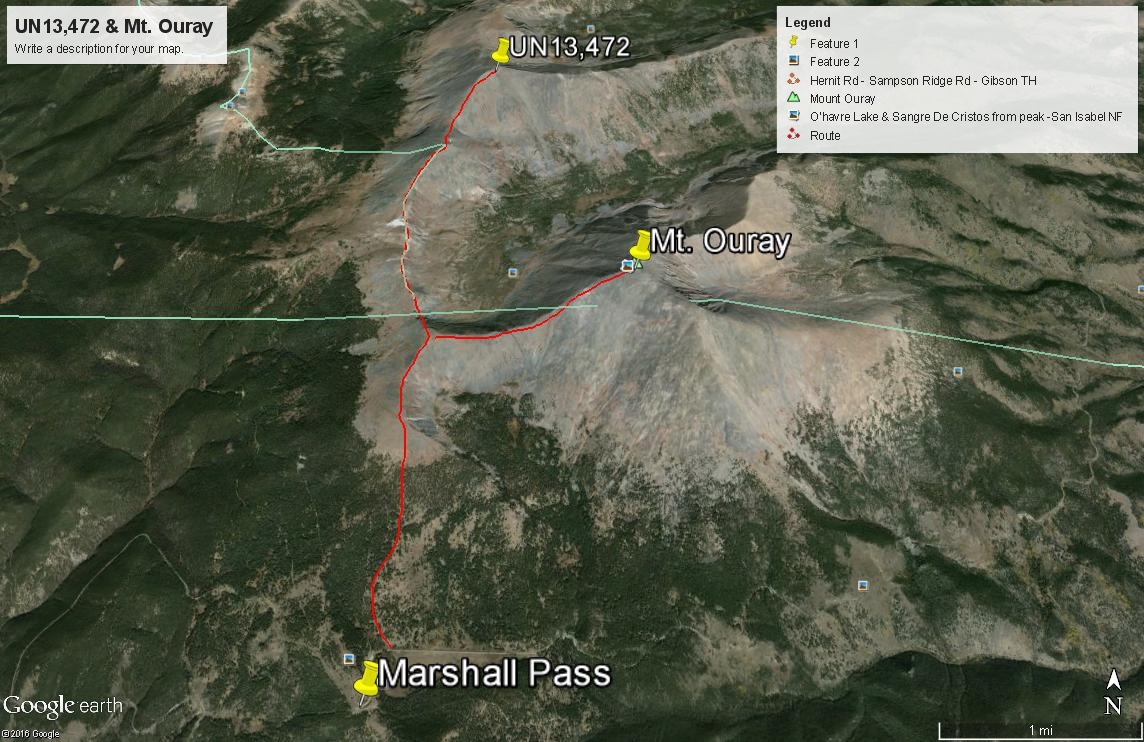Note: On the USGS quad, the name "Chipeta Mountain" appears next to Pt. 12,850. Since the unnamed summit of 13,472 north of that point is higher, the name Chipeta Mountain has been applied to UN 13,472.
From Marshall Pass, if you're just climbing Chipeta you could head north on the shared Continental Divide/Colorado Trail until you're due west of Chipeta Mountain/Pt. 12,850. Then you could easily ascend the west facing slopes of it, turn north from that summit and make the final ascent to UN13,472/Chipeta. This route would have the convenience of a well-maintained trail for several miles, but being the peakbaggers that we are, we prefer the higher elevations and the views.
So again, from Marshall Pass, walk north along the road until it begins to turn to the east and utilize trail if you want or head north into meadows with open forest to gain the broad south ridge that comes off Pt. 12,685. There is a short road that leads to a private cabin near here. If you stay more to the east side of this south slope/ridge, you can avoid denser forest and follow up on mostly open grass & tundra with open trees all about. The goal would be to gain the ridge where it forms up and becomes more pronounced south of PT. 12,685. On Google Earth you can even spot a trail now that goes all the way up to the ridge and beyond. Once on the ridge, the now more defined trail generally stays just on the west side, but at one point, goes off on the east side to avoid an area of rocks. The trail leads to the top of PT.12,685 where it then turns east for Mount Ouray. If not climbing Ouray and only heading for 13,472/Chipeta,, it may be tempting to contour below Pt. 12,685 on the west side to avoid unnecessary elevation gain & loss, however, you'll find a tedious contour across boulders. It's easier to just stay on the ridge crest.
From Pt. 12,685, proceed north following the ridge crest over two minor rises and three minor saddle to Chipeta Mountain/12,850. Drop a final time about 200 feet to another saddle and then make the final walking ascent to 13,472/Chipeta. Almost all the hike to this last saddle from PT.12,685 is over tundra or embedded rock and minor talus. The last stretch is mostly rocky rubble. All along this high traverse, you'll be looking down into the remote upper end of Little Cochetopa Creek. If you're lucky, you may be able to spot some elk. On our particular climb, we spotted some bighorn sheep. We also watched a flock of about 100 crows flying all around the this peak on the thermals. We had never before seen quite so many congregated together.
The hike to this summit from the pass took us about 4 hours. The return won't be much shorter because there's so much high ridge to navigate back across, assuming you go back as you came. It would also be possible to bail off the ridge at Chipeta and drop west to pick up the Continental Divide/Colorado Trail below. This might be advisable if the weather becomes threatening.
 N 38° 26' 51.48", W 106° 14' 26.17"
(Not Field Checked)
N 38° 26' 51.48", W 106° 14' 26.17"
(Not Field Checked)
 Ouray, Mount
Ouray, Mount

